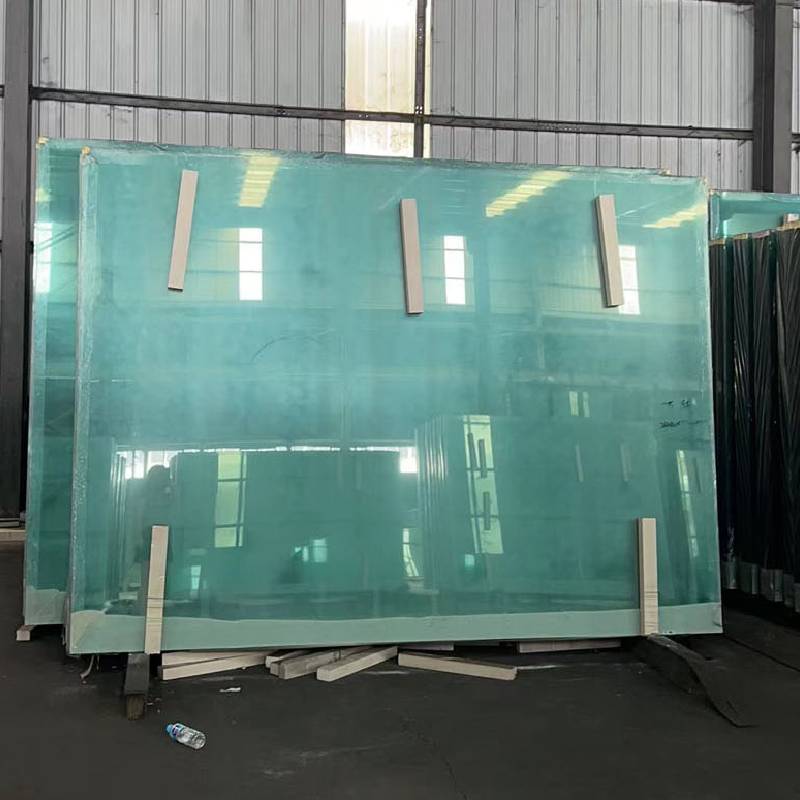Tempered Glass vs. Normal Glass Understanding the Differences
Glass is a material that has been utilized for centuries across various applications, from windows and bottles to sophisticated architectural features. However, not all glass is created equal. Two of the most common types are tempered glass and normal glass, each with unique characteristics, advantages, and applications. Understanding these differences can help consumers make informed choices based on their specific needs.
What is Normal Glass?
Normal glass, often referred to as annealed glass, is produced through a straightforward process of melting silica and other raw materials, followed by cooling. This type of glass is known for its clarity and versatility, making it suitable for a wide variety of applications such as residential windows, picture frames, and glass tables.
However, normal glass is relatively fragile and can break easily upon impact or temperature changes. When broken, normal glass shatters into large, sharp shards, posing a risk of injury to individuals nearby. This characteristic limits its use in certain environments where safety is a concern, such as commercial buildings or public spaces.
What is Tempered Glass?
Tempered glass, also known as toughened glass, undergoes a specialized manufacturing process that enhances its strength and thermal resistance. The production involves heating the glass to high temperatures (around 620°C or 1,148°F) and then rapidly cooling it. This process creates internal stress within the glass, making it much stronger than normal glass.
As a result, tempered glass is roughly four to five times stronger than its normal counterpart
. It is designed to withstand higher temperatures and sudden temperature changes, making it an ideal choice for environments that experience thermal shock, such as shower doors, glass doors, and facades in buildings.
tempered glass and normal glass
One of the key advantages of tempered glass is its safety features. When it does break, it shatters into small, blunt pieces rather than sharp shards, significantly reducing the risk of injury. This safety quality is particularly important in settings with high foot traffic or where children are present.
Applications and Uses
Given their distinct properties, tempered glass and normal glass find their applications in different settings. Normal glass is widely used in residential applications, including windows, mirrors, and basic glassware. Its aesthetic appeal and cost-effectiveness make it a popular choice for homeowners and businesses alike, but it is generally not used in areas where safety is a concern or where impact resistance is essential.
On the other hand, tempered glass is preferred in high-stakes environments. It is commonly used in commercial buildings, doors, skylights, and areas requiring thermal resistance such as restaurant kitchens or swimming pools. Additionally, its aesthetic versatility has made it popular for contemporary architecture, where large glass panels are often used to create open and airy spaces.
A Cost Perspective
Cost is another factor to consider when comparing these two types of glass. Normal glass is generally less expensive, making it an appealing choice for projects with budget constraints. However, owing to its enhanced durability and safety features, tempered glass typically comes with a higher price tag. The upfront investment in tempered glass can result in cost savings in the long run, as it is less likely to require repairs or replacement due to breakage.
Conclusion
In conclusion, both tempered glass and normal glass serve essential roles in various applications. While normal glass offers affordability and versatility, it lacks the strength and safety features of tempered glass. Understanding these differences allows consumers, architects, and builders to select the most appropriate type of glass based on the specific requirements of their projects. Whether prioritizing aesthetics, safety, or budget considerations, knowing the characteristics of each type ensures sound decisions in the world of glass usage.
 Afrikaans
Afrikaans  Albanian
Albanian  Amharic
Amharic  Arabic
Arabic  Armenian
Armenian  Azerbaijani
Azerbaijani  Basque
Basque  Belarusian
Belarusian  Bengali
Bengali  Bosnian
Bosnian  Bulgarian
Bulgarian  Catalan
Catalan  Cebuano
Cebuano  Corsican
Corsican  Croatian
Croatian  Czech
Czech  Danish
Danish  Dutch
Dutch  English
English  Esperanto
Esperanto  Estonian
Estonian  Finnish
Finnish  French
French  Frisian
Frisian  Galician
Galician  Georgian
Georgian  German
German  Greek
Greek  Gujarati
Gujarati  Haitian Creole
Haitian Creole  hausa
hausa  hawaiian
hawaiian  Hebrew
Hebrew  Hindi
Hindi  Miao
Miao  Hungarian
Hungarian  Icelandic
Icelandic  igbo
igbo  Indonesian
Indonesian  irish
irish  Italian
Italian  Japanese
Japanese  Javanese
Javanese  Kannada
Kannada  kazakh
kazakh  Khmer
Khmer  Rwandese
Rwandese  Korean
Korean  Kurdish
Kurdish  Kyrgyz
Kyrgyz  Lao
Lao  Latin
Latin  Latvian
Latvian  Lithuanian
Lithuanian  Luxembourgish
Luxembourgish  Macedonian
Macedonian  Malgashi
Malgashi  Malay
Malay  Malayalam
Malayalam  Maltese
Maltese  Maori
Maori  Marathi
Marathi  Mongolian
Mongolian  Myanmar
Myanmar  Nepali
Nepali  Norwegian
Norwegian  Norwegian
Norwegian  Occitan
Occitan  Pashto
Pashto  Persian
Persian  Polish
Polish  Portuguese
Portuguese  Punjabi
Punjabi  Romanian
Romanian  Russian
Russian  Samoan
Samoan  Scottish Gaelic
Scottish Gaelic  Serbian
Serbian  Sesotho
Sesotho  Shona
Shona  Sindhi
Sindhi  Sinhala
Sinhala  Slovak
Slovak  Slovenian
Slovenian  Somali
Somali  Spanish
Spanish  Sundanese
Sundanese  Swahili
Swahili  Swedish
Swedish  Tagalog
Tagalog  Tajik
Tajik  Tamil
Tamil  Tatar
Tatar  Telugu
Telugu  Thai
Thai  Turkish
Turkish  Turkmen
Turkmen  Ukrainian
Ukrainian  Urdu
Urdu  Uighur
Uighur  Uzbek
Uzbek  Vietnamese
Vietnamese  Welsh
Welsh  Bantu
Bantu  Yiddish
Yiddish  Yoruba
Yoruba  Zulu
Zulu 

